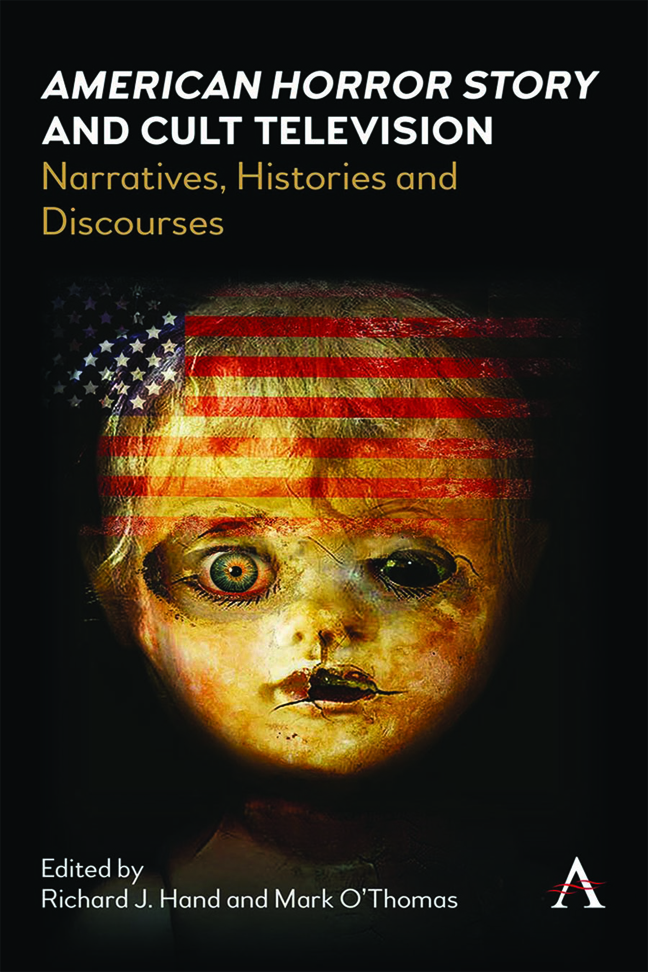Chapter 5 - Science, Madness, and the Gothic in American Horror Story's ‘Asylum’
Published online by Cambridge University Press: 01 March 2024
Summary
The archetypal fears of the horrors of the madhouse always linger just below the surface in our collective unconscious […] a symbolic and practical threat to the very fabric of the social order. The distress and the disturbance of the unhinged remind us all too clearly of the fragility of the rule of reason.
(Andrew Scull from Madhouse)Horror myths establish social patterns not of escape, but entry
(James B Twitchell from Dreadful Pleasures).Introduction
The opening of AHS: ‘Asylum’ takes place in the ‘present day’. In this first scene, ghost-hunting newlyweds visit the fictional, infamous and dilapidated Briarcliff Asylum. As they attempt to navigate the labyrinthine corridors of this disused mental institution, looking for signs of the paranormal, their timeline dissolves into the hospital of forty years ago. The orderlies and patients appear to walk over the couple as each group overlaps visually. This adjacency of past and present leads to an entanglement not across space but instead across time. Acting as a cornerstone of the narrative, the drawing together of two chronologies in an exterior and visible movement likewise establishes both an interior displacement of rationality and an existential dilemma. According to Michel Foucault, admittedly, there is no perfect perception. However, the viewer is at this moment nonetheless offered a privileged insight into both the historical world of the hospital's heyday and the present world of what the asylum has become. Through this heightened awareness, the spectator is likewise implicated in their confluence. Much like Foucault's madman who denies delineation, under the influence of this aberration in logical linearity, the narrative, the characters and the location come to function as symbolic palimpsests. Indeed, as the temporal continuum increasingly folds upon itself, exi sting outside of time, increasingly divorcing itself from the possibility of past memories or present knowledge, this madness becomes as infectious as it is invasive. In other words, if identity is based upon a discrimination of difference, and knowledge based on an awareness of one's distinct identity, as Foucault suggests, then the contagion of the irrational let loose in Briarcliff draws things together within a fluidity that both obfuscates and effaces first perception, then knowledge and finally subjectivity.
In an attempt to locate these mechanisms of irrationality that underpin ‘Asylum’, and to understand their effects, this chapter will analyze the second installment of this long-running televisual series both textually and extra-textually.
- Type
- Chapter
- Information
- American Horror Story and Cult TelevisionNarratives, Histories and Discourses, pp. 79 - 94Publisher: Anthem PressPrint publication year: 2023

